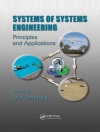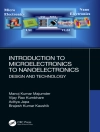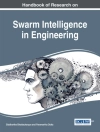Global warming, pollution, food and water shortage, cyberspace insecurity, over-population, land erosion, and an overburdened health care system are major issues facing the human race and our planet. These challenges have presented a mandate to develop “natural” or “green” technologies using nature and the living system as a guide to rationally design processes, devices, and systems. This approach has given rise to a new paradigm, one in which innovation goes hand-in-hand with less waste, less pollution, and less invasiveness to life on earth. Bioinspiration has also led to the development of technologies that mimic the hierarchical complexity of biological systems, leading to novel highly efficient, more reliable multifunctional materials, devices, and systems that can perform multiple tasks at one time. This multi-volume handbook focuses on the application of biomimetics and bioinspiration in medicine and engineering to produce miniaturized multi-functional materials, devices, and systems to perform complex tasks. Our understanding of complex biological systems at different length scales has increased dramatically as our ability to observe nature has expanded from macro to molecular scale, leading to the rational biologically-driven design to find solution to technological problems in medicine and engineering.The following three-volume set covers the fields of bioinspired materials, electromechanical systems developed from concepts inspired by nature, and tissue models respectively.The first volume focuses on the rational design of nano- and micro-structured hierarchical materials inspired by the relevant characteristics in living systems, such as the self-cleaning ability of lotus leaves and cicadas’ wings; the superior walking ability of water striders; the anti-fogging function of mosquitoes’ eyes; the water-collecting ability of Namib Desert Beetles and spider silk; the high adhesivity of geckos’ feet and rose petals; the high adhesivity of mussels in wet aquatic environments; the anisotropic wetting of butterflies’ wings; the anti-reflection capabilities of cicadas’ wings; the self-cleaning functionality of fish scales; shape anisotropy of intracellular particles; the dielectric properties of muscles; the light spectral characteristics of plant leaves; the regeneration and self-healing ability of earthworms; the self-repairing ability of lotus leaves; the broadband reflectivity of moths’ eyes; the multivalent binding, self-assembly and responsiveness of cellular systems; the biomineral formation in bacteria, plants, invertebrates, and vertebrates; the multi-layer structure of skin; the organization of tissue fibers; DNA structures with metal-mediated artificial base pairs; and the anisotropic microstructure of jellyfish mesogloea. In this volume, sensor and microfluidic technologies combined with surface patterning are explored for the diagnosis and monitoring of diseases. The high throughput combinatorial testing of biomaterials in regenerative medicine is also covered.The second volume presents nature-oriented studies and developments in the field of electromechanical devices and systems. These include actuators and robots based on the movement of muscles, algal antenna and photoreception; the non-imaging light sensing system of sea stars; the optical system of insect ocellus; smart nanochannels and pumps in cell membranes; neuromuscular and sensory devices that mimic the architecture of peripheral nervous system; olfaction-based odor sensing; cilia-mimetic microfluidic systems; the infrared sensory system of pyrophilous insects; ecologically inspired multizone temperature control systems; cochlea and surface acoustic wave resonators; crickets’ cercal system and flow sensing abilities; locusts’ wings and flapping micro air vehicles; the visual motion sensing of flying insects; hearing aid devices based on the human cochlea; the geometric perception of tortoises and pigeons; the organic matter sensing capability of cats and dogs; and the silent flight of rats. The third volume features engineered models of biological tissues. These include engineered matrices to mimic cancer stem cell niches; in vitro models for bone regeneration; models of muscle tissue that enable the study of cardiac infarction and myopathy; 3D models for the differentiation of embryonic stem cells; bioreactors for in vitro cultivation of mammalian cells; human lung, liver and heart tissue models; topographically-defined cell culture models; ECM mimetic tissue printing; biomimetic constructs for regeneration of soft tissues; and engineered constructs for the regeneration of musculoskeletal and corneal tissue.This three-volume set is a must-have for anyone keen to understand the complexity of biological systems and how that complexity can be mimicked to engineer novel materials, devices and systems to solve pressing technological challenges of the twenty-first century.Key Features:The only handbook that covers all aspects of biomimetics and bioinspiration, including materials, mechanics, signaling and informatics Contains 248 colored figures
Esmaiel Jabbari & Luke P Lee
HDBK BIOMIMETIC & BIOINSPI (3V) [EPUB ebook]
Biologically-Driven Engineering of Materials, Processes, Devices, and Systems(In 3 Volumes)
HDBK BIOMIMETIC & BIOINSPI (3V) [EPUB ebook]
Biologically-Driven Engineering of Materials, Processes, Devices, and Systems(In 3 Volumes)
ซื้อ eBook เล่มนี้และรับฟรีอีก 1 เล่ม!
ภาษา อังกฤษ ● รูป EPUB ● หน้า 1464 ● ISBN 9789814520270 ● ขนาดไฟล์ 75.5 MB ● บรรณาธิการ Esmaiel Jabbari & Luke P Lee ● สำนักพิมพ์ World Scientific Publishing Company ● เมือง Singapore ● ประเทศ SG ● การตีพิมพ์ 2014 ● ที่สามารถดาวน์โหลดได้ 24 เดือน ● เงินตรา EUR ● ID 6499757 ● ป้องกันการคัดลอก Adobe DRM
ต้องใช้เครื่องอ่านหนังสืออิเล็กทรอนิกส์ที่มีความสามารถ DRM












